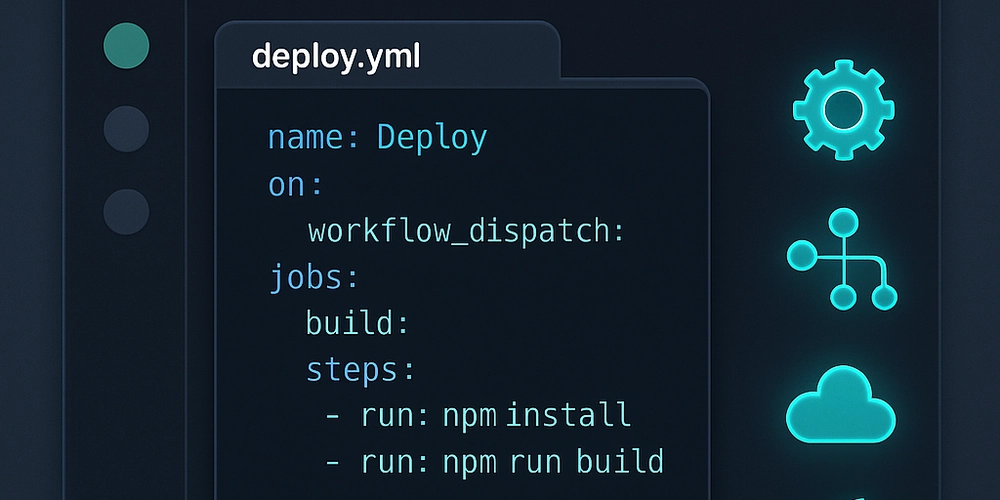What if Vite had its own nest g? Now it does!
I’ve only recently started sharing articles and documentation publicly. Previously, all my writing was internal — release notes, docs, research, roadmaps — all within teams. But after publishing my first Vite plugin, I felt the need to share it with the world. To get feedback. To see if anyone would find it useful. Maybe someone would suggest a feature, spot a bug — or just say “thanks.” And while writing about it, I realized something: I enjoy this. I was already thinking about the next topic. But let’s get back to the plugin. How It All Started: Inspired by NestJS I’ve been a developer for over 5 years — mostly frontend, but I’ve been getting into backend recently too. It started with Node.js + Express, and then, at work, we launched a project to automate voice calls and analyze transcripts using OpenAI. I chose to build it with NestJS. I was only mildly familiar with it, but had to dive deep. And then, I ran: nest g resource …and boom — a full module appeared. I literally said out loud: “Why doesn’t React have something like this?!” Yes, there are snippets. Yes, some third-party generators exist. But I wanted structure. I wanted to type a command — and get a scaffolded component. Just like Nest. The Frontend Pain Back to a new internal project: a Telegram Web App using Vite + TypeScript + React + Zustand. A simple, small app. I start coding, and suddenly I’m back at it again: Create a folder Create Component.tsx Add index.ts Add props interface Import styles …and repeat Eventually, a new page design landed — and I had to do it all over again. My eye started twitching. So I wrote a bash script. It scaffolded everything I needed. Made it executable. Called it create-component. And you know what? I was so happy. Then came create-store, create-page, and so on. Life got easier. But there were still problems: Every project has slightly different templates Folder structure varies Sometimes you need something custom — and have to rewrite the script Especially on legacy projects — one had Angular 1.5 and React mixed in

I’ve only recently started sharing articles and documentation publicly.
Previously, all my writing was internal — release notes, docs, research, roadmaps — all within teams.
But after publishing my first Vite plugin, I felt the need to share it with the world. To get feedback. To see if anyone would find it useful. Maybe someone would suggest a feature, spot a bug — or just say “thanks.”
And while writing about it, I realized something: I enjoy this. I was already thinking about the next topic. But let’s get back to the plugin.
How It All Started: Inspired by NestJS
I’ve been a developer for over 5 years — mostly frontend, but I’ve been getting into backend recently too.
It started with Node.js + Express, and then, at work, we launched a project to automate voice calls and analyze transcripts using OpenAI. I chose to build it with NestJS. I was only mildly familiar with it, but had to dive deep.
And then, I ran:
nest g resource
…and boom — a full module appeared.
I literally said out loud:
“Why doesn’t React have something like this?!”
Yes, there are snippets. Yes, some third-party generators exist. But I wanted structure.
I wanted to type a command — and get a scaffolded component. Just like Nest.
The Frontend Pain
Back to a new internal project: a Telegram Web App using Vite + TypeScript + React + Zustand. A simple, small app.
I start coding, and suddenly I’m back at it again:
- Create a folder
- Create Component.tsx
- Add index.ts
- Add props interface
- Import styles
- …and repeat
Eventually, a new page design landed — and I had to do it all over again.
My eye started twitching.
So I wrote a bash script. It scaffolded everything I needed. Made it executable. Called it create-component.
And you know what? I was so happy.
Then came create-store, create-page, and so on. Life got easier.
But there were still problems:
- Every project has slightly different templates
- Folder structure varies
- Sometimes you need something custom — and have to rewrite the script
Especially on legacy projects — one had Angular 1.5 and React mixed in













































































































































































![[The AI Show Episode 156]: AI Answers - Data Privacy, AI Roadmaps, Regulated Industries, Selling AI to the C-Suite & Change Management](https://www.marketingaiinstitute.com/hubfs/ep%20156%20cover.png)
![[The AI Show Episode 155]: The New Jobs AI Will Create, Amazon CEO: AI Will Cut Jobs, Your Brain on ChatGPT, Possible OpenAI-Microsoft Breakup & Veo 3 IP Issues](https://www.marketingaiinstitute.com/hubfs/ep%20155%20cover.png)



















































































































![[DEALS] 1min.AI: Lifetime Subscription (82% off) & Other Deals Up To 98% Off – Offers End Soon!](https://www.javacodegeeks.com/wp-content/uploads/2012/12/jcg-logo.jpg)














































































































































_incamerastock_Alamy.jpg?width=1280&auto=webp&quality=80&disable=upscale#)
_Brain_light_Alamy.jpg?width=1280&auto=webp&quality=80&disable=upscale#)






























































































![Nothing Phone (3) has a 50MP ‘periscope’ telephoto lens – here are the first samples [Gallery]](https://i0.wp.com/9to5google.com/wp-content/uploads/sites/4/2025/06/nothing-phone-3-telephoto.jpg?resize=1200%2C628&quality=82&strip=all&ssl=1)























































































